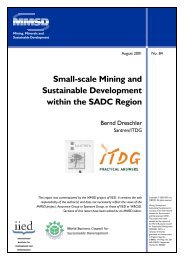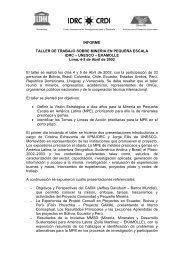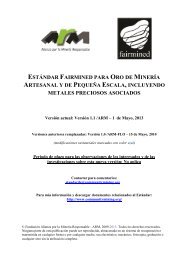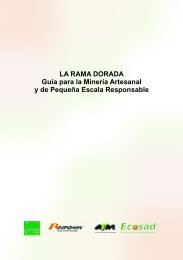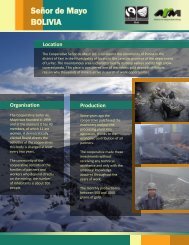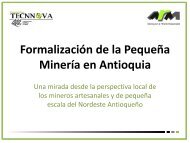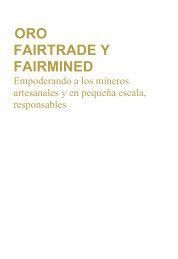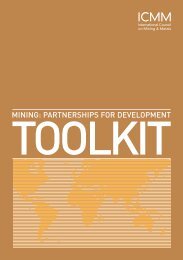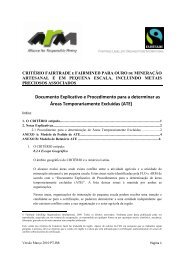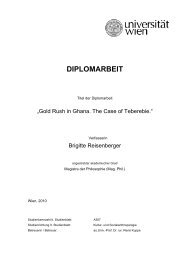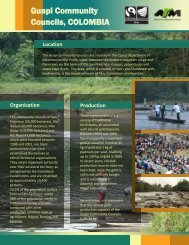A Poisonous Mix - Human Rights Watch
A Poisonous Mix - Human Rights Watch
A Poisonous Mix - Human Rights Watch
You also want an ePaper? Increase the reach of your titles
YUMPU automatically turns print PDFs into web optimized ePapers that Google loves.
Methodology<br />
Field research for this report was carried out between February and April 2011 in Bamako<br />
and in the mining areas in Western and S0uthern Mali. <strong>Human</strong> <strong>Rights</strong> <strong>Watch</strong> researchers<br />
visited three mining sites in Kéniéba circle, in the Kayes region of Western Mali — Baroya<br />
(Sitakili commune), Tabakoto (Sitakili commune), and Sensoko (Kéniéba commune) — and<br />
one mine in Worognan (Mena commune) in Kolondiéba circle, in the Sikasso region of<br />
Southern Mali (see map).<br />
<strong>Human</strong> <strong>Rights</strong> <strong>Watch</strong> interviewed over 150 people—including 41 children working in mining<br />
areas (24 boys and 17 girls)—for this report. 1 Thirty-three of these children worked in gold<br />
mining, and the other eight, among them seven girls, worked as child laborers in other<br />
sectors such as childcare, domestic work, agriculture, or in small scale enterprises. Five of<br />
the forty-one children were immigrants; two were from Burkina Faso, and three were from<br />
Guinea. We also interviewed three young adults, ages eighteen and nineteen, two of whom<br />
were working in a gold mine, and one as a sex worker at a mining site.<br />
While the majority of the children interviewed lived with their parents, five lived with<br />
relatives or other guardians, and seven were living on their own.<br />
We also interviewed a wide range of other actors in mining areas, including parents and<br />
guardians of child workers, adult miners, teachers and principals, health workers and health<br />
experts, village chiefs, tombolomas (traditional mining chiefs), NGO activists, and sex<br />
workers. In addition, <strong>Human</strong> <strong>Rights</strong> <strong>Watch</strong> researchers held meetings with gold traders in<br />
mining areas and in Bamako, with representatives of UN agencies and donor governments.<br />
We interviewed the Minister of Labor and Civil Service and his staff, as well as officials in the<br />
Ministry of Mines, the Ministry of Health, the Ministry of Environment and Sanitation, the<br />
Ministry of Education, and the Ministry of Promotion of Women, Child and Family Affairs. We<br />
also interviewed local government officials in Kéniéba and Kolondiéba circles.<br />
1 Two local consultants carried out 16 of the 41 interviews with children. In this report, the word "child" refers to anyone<br />
under the age of 18. The Convention on the <strong>Rights</strong> of the Child states, "For the purposes of the present Convention, a child<br />
means every human being below the age of 18 years unless under the law applicable to the child, majority is attained<br />
earlier." Convention on the <strong>Rights</strong> of the Child (CRC), adopted November 20, 1989, G.A. Res. 44/25, annex, 44 U.N. GAOR<br />
Supp. (No. 49) at 167, U.N. Doc. A/44/49 (1989), entered into force September 2, 1990, ratified by Mali on September 20,<br />
1990. When this report uses the term adolescents, it refers to older children.<br />
A POISONOUS MIX 14



